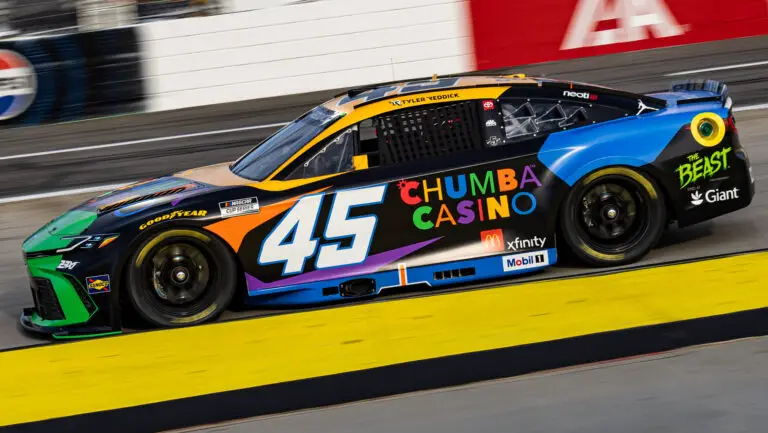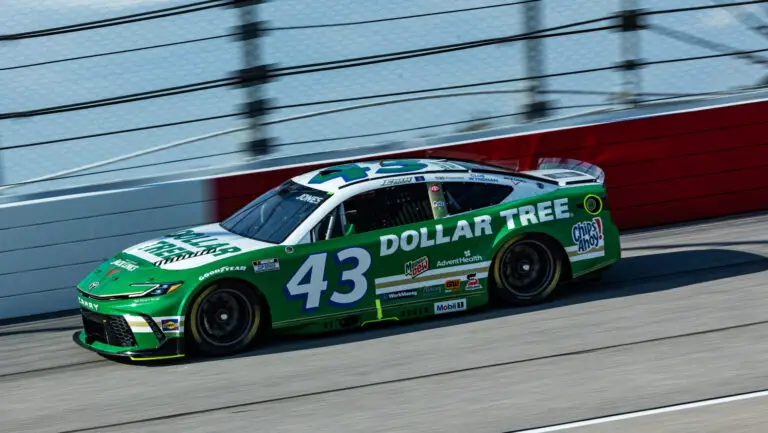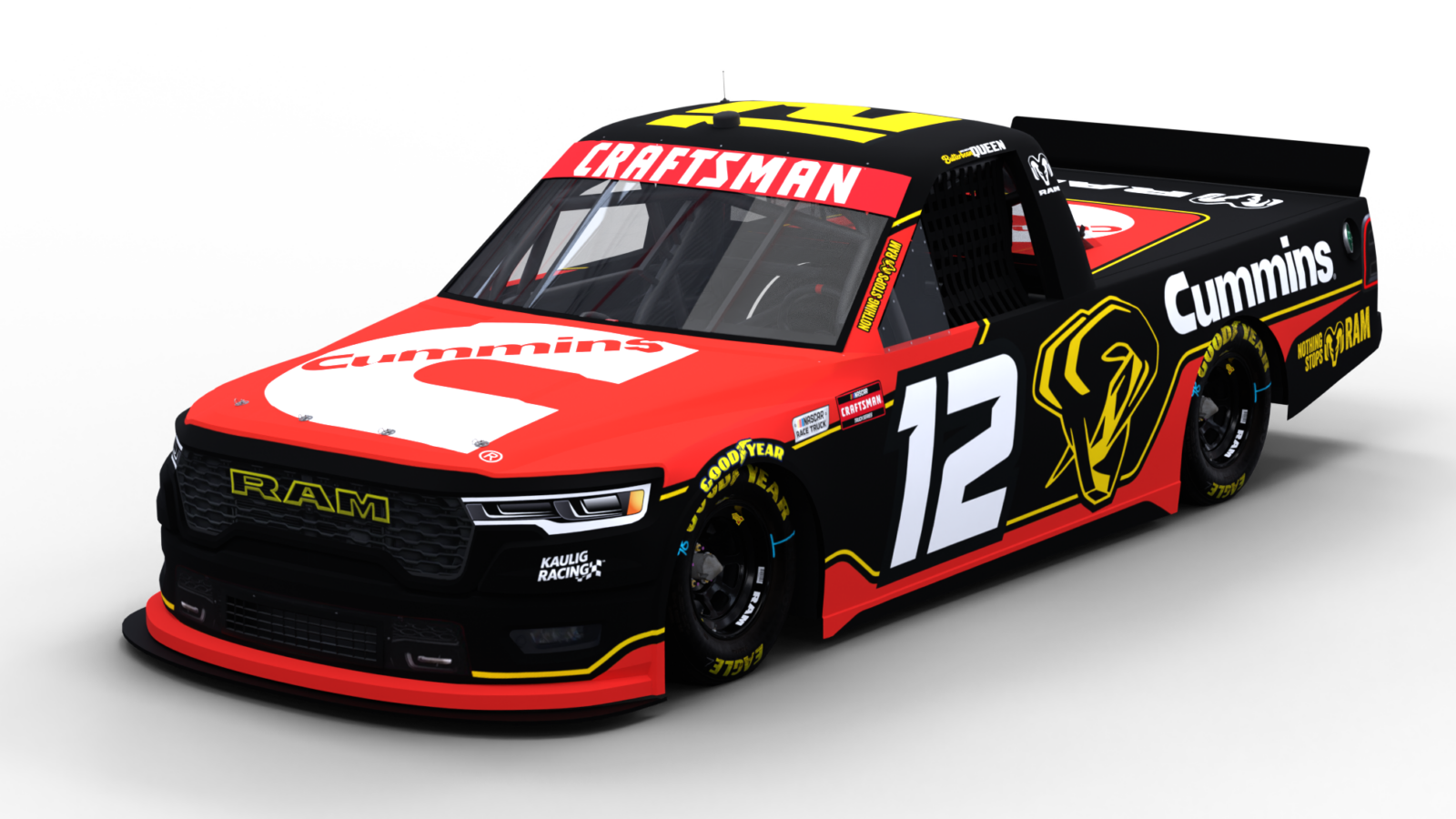There’s no avoiding the obvious; the conclusion of Sunday’s NASCAR Cup Series event at Martinsville Speedway was pretty messy.
Following a high-intensity points battle between William Byron and Christopher Bell in the closing laps of the race, the final spot in the Championship 4 came down to a judgment call from NASCAR.
A safety violation for Bell, which stemmed from riding the wall on the final lap of the race, demoted the Joe Gibbs Racing driver from 18th to 22nd, knocking him below the cutline, in favor of Byron.
On the surface, that last-lap wall ride by Christopher Bell appeared to be the deciding factor — and as far as what NASCAR looked at in the 27-minute deliberation, it was.
After a thorough examination of in-car cameras and radio communications, it appears there may have been games played by some non-playoff drivers, which benefitted those in the fight.
In the closing laps of the XFINITY 500, William Byron was fading quickly, being passed by Ryan Blaney, Austin Cindric, and Denny Hamlin over the last 50 laps, dropping him to sixth and a single point above the cutline.
For the final 15 laps of the event, Byron managed to hold his position in sixth, with Chevrolet drivers Austin Dillon and Ross Chastain planted directly behind him, and “unable” to make the pass.
The result was an enormous huddle of cars bunched directly behind the No. 24 Liberty University Chevrolet, spanning from sixth — where Byron finished — back to his Hendrick Motorsports teammate Alex Bowman, in 13th.
Radio communications between Austin Dillon, crew chief Justin Alexander, and spotter Brandon Benesch — who was suspended at Richmond following his radio communications on the final lap — aren’t completely innocent either.
This is five minutes of radio communications from Austin Dillon’s team talking about the late-race “plan” to help out the No. 24.
FWIW: Brandon Benesch (spotter) is 11 weeks removed from a penalty stemming from his radio comms at Richmond. ?#NASCAR
— Joseph Srigley (@joe_srigley) November 4, 2024
The communications also incriminate Ross Chastain, crew chief Phil Surgen, and spotter Brandon McReynolds, when Alexander [crew chief of the No. 3] asks if the No. 1 team knows of “the plan”. However, nothing suspicious can be heard on the radio of the Trackhouse Racing driver.
Nothing super egregious on the radio communications for Ross Chastain and the No. 1 team — only one mention of Byron’s points situation.
Only real suspicion is they get implicated by the No. 3 radio when they ask if the No. 1 knows the plan. #NASCAR
— Joseph Srigley (@joe_srigley) November 4, 2024
On the other side of things (which benefitted Christopher Bell), Bubba Wallace, a Toyota-backed driver, dramatically slowed in the final five laps of Sunday’s event, dropping from just behind the race leader into the clutches of Bell on the final lap.
Radio communications between Bubba Wallace, crew chief Bootie Barker, and spotter Freddie Kraft don’t suggest anything suspicious going on. With three laps remaining, Wallace says “I think I’ve got a tire going down” and for the remainder of the event, the No. 23 is bobbling in the corner and losing considerable amounts of pace.
Here is the radio chatter between Bubba Wallace and the No. 23 during the final laps of the race.
Coming to three to go, Wallace says “I think I’ve got a tire go down”. Asked after if he needs a fire extinguisher – #45 had a fire earlier. #NASCAR
— Joseph Srigley (@joe_srigley) November 4, 2024
Elton Sawyer, NASCAR’s Senior Vice President of Competition, said in a post-race press conference that the sanctioning body will investigate these potential race manipulation issues during the week, with any penalties being announced in the weekly penalty report.
Though, the fact of the matter is…
Manufacturer Influence Puts Lasting Stain on Playoff System
Don’t bite the hand that feeds you.
It’s an age-old saying that still rings true in the modern-day, and one that perfectly describes the current landscape of the manufacturer and team relationship.
Chevrolet, Ford, and Toyota (the three active manufacturers in the NASCAR Cup Series) currently have their allegiances and their ‘top dogs’. It’s no different than it’s always been, and that’s not going to change.
These relationships, even moreso in recent years, are crucial as NASCAR’s premier division continues to become more competitive with every passing season. But, the fact of the matter is, that the automakers hold all of the leverage.
Most of the data and information received by the teams comes directly from the manufacturer, but it’s also controlled by them, meaning that with the snap of a finger, the flow of crucial information can get dialed up, or even cut off.
That metaphorical shut-off valve has been used more frequently in recent years, especially following announcements that a particular organization, crew chief, or driver will be moving on from a manufacturer at season’s end — i.e. Travis Peterson and Michael McDowell, LEGACY MOTOR CLUB.
There’s been an increased level of talk about manufacturer allegiance in recent seasons, especially on the superspeedways. It’s ranged anywhere from pre-race competition meetings to blatant radio communications telling drivers not to push somebody from another manufacturer to the race-lead, or a victory.
Sunday’s XFINITY 500 at Martinsville Speedway is the third time since the penultimate event of the regular season at Daytona that there has been some well-documented manufacturer influence.
Parker Retzlaff was part of an enormous controversy at Daytona after he pushed a Ford Mustang (Harrison Burton) to victory while driving a Chevrolet. Later, in the Playoffs, a stink was made about Kyle Larson not giving Brad Keselowski an adequate enough push to win the race, so that the Chevrolets of Ricky Stenhouse, Jr. and William Byron could get ahead.
It’s become pretty clear that the fear of being reprimanded by a manufacturer is weighing on the minds of competitors — whether it be drivers, crew chiefs, spotters, or team members in general — and it’s totally changing the outcome of races.
“Teams are going to do, and OEMs are going to do, everything that they can. That’s how important it is to race for a championship,” said Jeff Gordon, Vice Chairman of Hendrick Motorsports. “They’re going to do everything within the rules, and as far as we know everything within the rules, and we know that if we’re not doing it, our competitors are going to be doing it.”
The conclusion of Sunday’s event at Martinsville Speedway only muddied the water further, in an iteration of the NASCAR Cup Series Playoffs that have delivered their fair share of controversy.
After the smattering of an amazing short-track event at Martinsville, many within the industry and a vocal portion of the fanbase, believe that the NASCAR Cup Series Playoffs format should be the so-called sacrificial lamb.
That includes 2012 NASCAR Cup Series champion Brad Keselowski, now a co-owner of RFK Racing (formerly Roush Fenway Racing), who following Sunday’s event posted on social media a strong message that “this should be the last straw on the camel’s back for the playoffs”.
It’s a system that has faced an incredible amount of scrutiny and disdain in the decade that it has been utilized in the NASCAR Cup Series, and with every additional controversy added to the rap sheet – like Sunday at Martinsville — the legitimacy of the format, which is often paraded for its excitement, keeps diminishing further and further.















One Response
Agreed totally! I don’t thing a car owned should field more than two cars. The manufacturers should have NO say so about what happens on the track! Their communications should be cut off during qualifying and the race! I also don’t think ther should be charters either. Show up and if you qualify your in like the old days! And cool it with all the road courses. ???? Just my opinions. Thank you.